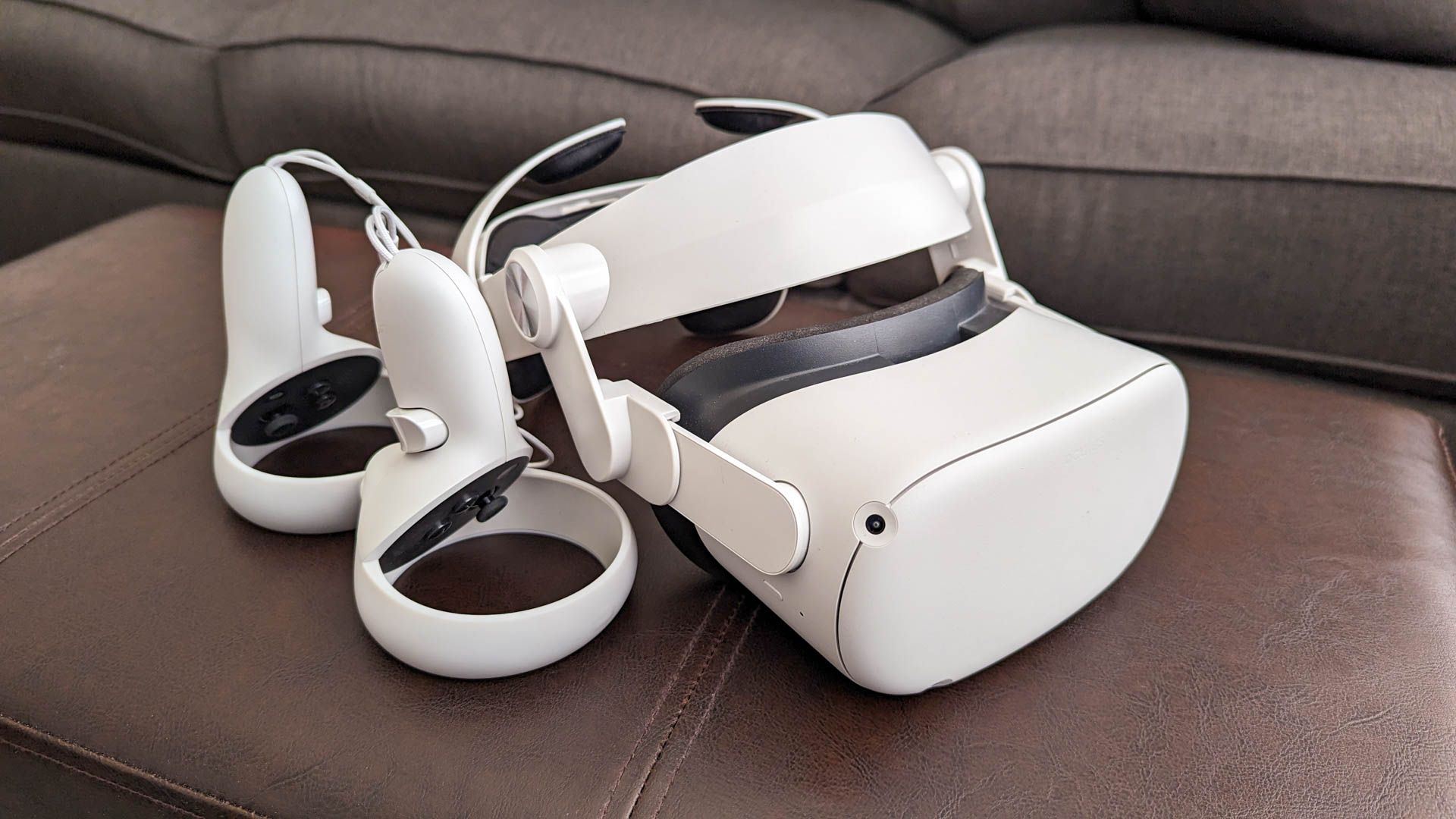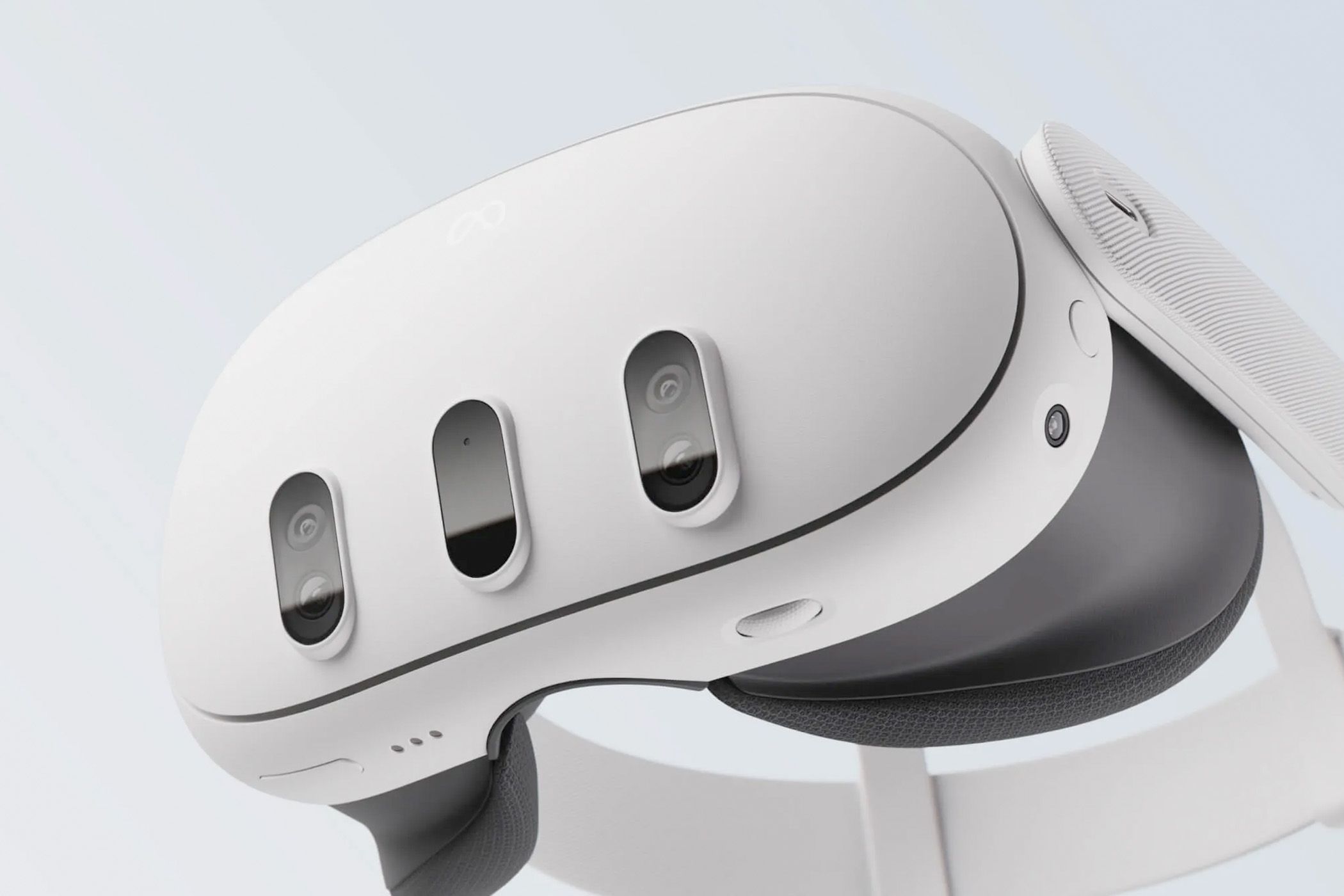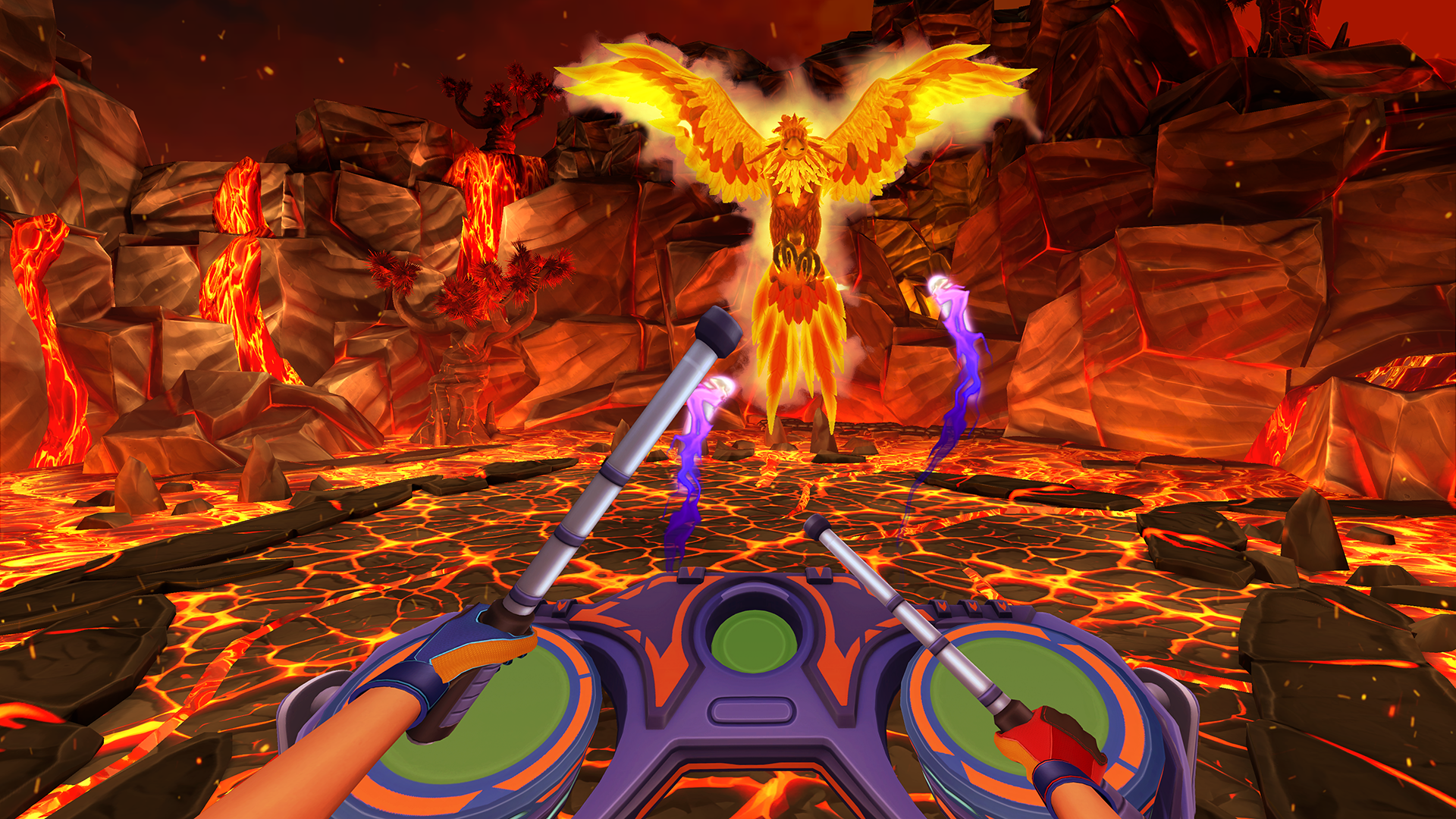Hand and head tracking combined with a sense of immersion not possible on a TV mean that fitness games thrive in VR. While the popular martial arts games on Meta Quest 3 are too intense for me, I wanted to get in on the sweaty fun with intense Beat Saber sessions. It worked until it didn’t.
The Love and Pain of Beat Saber
Beat Saber probably needs no introduction given its reputation as one of the best VR games, but here’s how it works if you’re unfamiliar.
The VR controllers represent lightsabers that you use to slice oncoming blocks to the beat of heart-pumping tunes. Many songs also require you to occasionally duck and dodge oncoming obstacles, forcing your whole body to move in time with a song. Ramp up the speed at higher difficulties, and you have a perfect fitness game for working up a sweat.
Noticing that casual sessions were a workout in their own right, I decided I’d use Beat Saber to get in 30 minutes of sustained daily movement while honing my rhythmic skills.
Workout sessions were great for a while, with a real growth in my stamina showing in my ability to play difficult songs for longer stretches of time without getting winded. If anything, the adrenaline of having virtually no downtime helped me better focus on slashing and dodging to victory. There were even times when I played for up to an hour without dropping the pace before I realized how much time had passed.
According to the “Fitness Gaming” workout preset on my Apple Watch, particularly demanding levels could get my heart rate into the low 140s, though it usually settled in the 120 BPM range. That’s a pretty decent workout for someone whose workdays are often otherwise sedentary. Most importantly, I was having fun, something that kept me coming back.
A costly mistake from the outset began to catch up with me, though. Because my mind categorized Beat Saber as leisure that happened to double as a workout rather than an explicit workout on its own, I never thought to stretch beforehand. This eventually led to a slight twinge of pain in my left shoulder. I began to stretch after this point, but the pain only grew.
So I decided to stop before it became a problem.
I Switched to Fitness Fables Instead
Luckily, an alternative arrived on the scene at the exact moment that promised an alternative solution: Fitness Fables. A few weeks in, the quality of my workouts—at least insomuch as my Apple Watch tracks—has improved, and the pain has ceased.
Fitness Fables shares a similar visual flair and workout loop to the Nintendo Switch’s Ring Fit Adventure, though the two play out quite differently. Instead of running through levels with intermittent exercise repetitions, the exercises themselves determine how you propel yourself through levels. These include simulations of rowing, skiing, and using various contraptions powered by squats and arm movements.
Battles also exist, though they’re not presented as turn-based encounters like in Ring Fit Adventure. Rather, the set of exercises has you aiming at enemies or bosses. Think tennis, archery, and a variety of arm-pumping mechanisms that blast magical energy in the direction you’re facing. These make great use of the Quest Touch Plus controller’s haptics and grips to properly trick your mind into thinking you’re actually performing these actions, and that you’re doing so correctly.
While I wouldn’t consider any of this particularly engaging gameplay—and I largely ignore the counter-intuitive collectibles that often require you to stop an exercise to grab—it doesn’t matter much. Fitness Fables does the job of gamifying my workouts enough that I look forward to them. It also gets my blood pumping consistently in the 140 BPM range on its medium difficulty, with higher peaks for tougher exercises.

Related
6 Ways to Get the Most Out of Your Quest VR Headset
There’s so much more to the Quest than you know.
VR Fitness Still Faces a Few Problems
As much as I’m enjoying Fitness Fables and still love Beat Saber with measured breaks, they both highlight some issues that prevent VR headsets like the Meta Quest 3 from becoming ideal workout devices.
For one, the lack of spatial or bodily awareness can be a hazard. It’s hard to observe your form when performing exercises, which could have been the cause of my Beat Saber shoulder pain. It’s especially problematic in the likes of Fitness Fables where you’re performing traditional exercises, as proper form is key not only to their efficacy but also ensuring you don’t hurt yourself.
VR headsets also don’t lend themselves well to cardio, at least without support for a leg strap a-la Ring Fit Adventure. There are forms of cardio that don’t require leg tracking, sure, but you’re still severely limiting the muscles you can work out. In other words, there’s really no trackable full-body workout in VR, which leads back to the prior issue of an inability to ensure proper form.
Even if you did have a leg strap, the top-heaviness of a headset would make it impractical if not uncomfortable. A head strap with good support does go a long way toward making the headset stable, but I’d be lying if I didn’t say there weren’t moments where it feels exercise would be easier if I ditched the immersive worlds. Neck strain is also a concern, especially if you’re using the stock fabric Meta Quest 3 head strap.
Lastly, 30 minutes with a fitness game results in a sweaty face and thus a sweaty facial interface (the adjustable plush lining inside the headset). It’s nasty and could incur the hidden cost of a separate facial interface for non-fitness usages. I’m not far off making such a purchase myself, though I’m not jazzed about the process of swapping out interfaces regularly.
Along similar “hidden cost” lines, it feels all but necessary to buy Active Straps or an equivalent third-party solution, so you don’t need to hold the controllers.
Some of these issues may be tough for Meta and other VR manufacturers to overcome, though as things stand, VR is still a viable way to get casual workouts in. Maybe one day I’ll get over my fear of being punched in the face and try out those ever-chart-topping boxing games.








